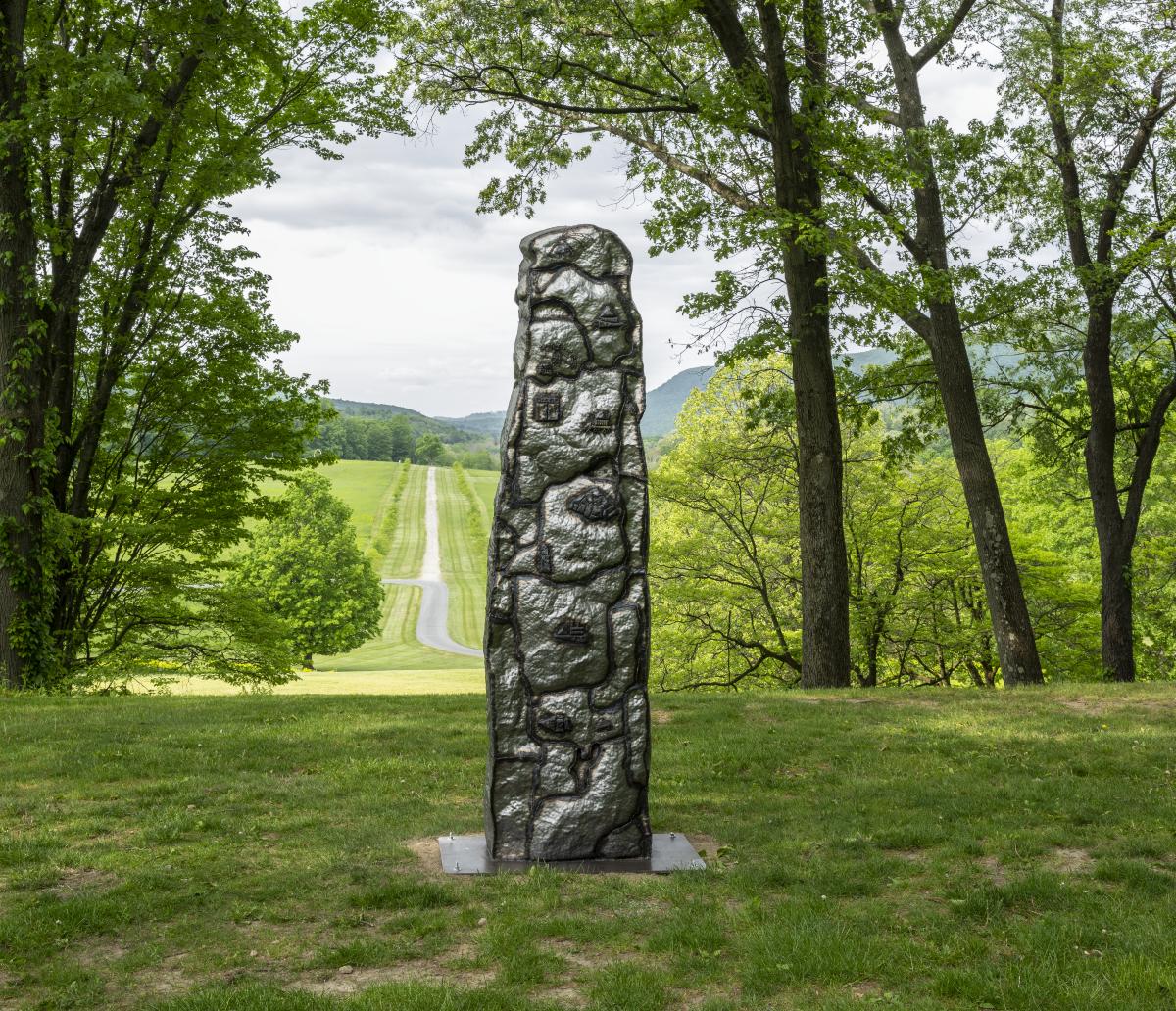Off view

Stela Z, after Quiriguá (Contrary Warrior) , 2023
Steel
Courtesy the artist and Commonwealth and Council
Photo by Jeffrey Jenkins
Stela Z, after Quiriguá (Contrary Warrior) (2023) takes the form of a stela from Quiriguá, an ancient Mayan site in present-day Guatemala. The glyphs on Stela Z represent the artist’s work Ilopango, the Volcano that Left in its many stages of existence and migration, as well as each work in the present exhibition as they appear on Museum Hill. Before it arrived at Storm King, Cortez’s volcano traveled by container ship across the Atlantic from the Atelier Calder in Saché, France, where Cortez began the work during a residency, to the artist’s studio in Los Angeles. From there, it was transported by truck to the Art Center, and finally, it will travel up the Hudson River by boat in the fall. Once Ilopango, the Volcano that Left leaves Storm King, the temporality of the Stela will shift, no longer foretelling the volcano’s future movements, but instead documenting the travels of its past.
Stela Z is the latest in the artist’s series of steel stelae, which she names out of order to disrupt the alphabetic naming conventions used in colonial archeological practices. The parenthetical aspect of the artwork’s title refers to the Native American concept of a contrary warrior, one who acts in deliberate opposition to those around them, breaking preconceived structures while moving across time and space. By retooling an ancient architectural form of documenting historical events for the present and an imagined future, Cortez’s stela resists linear temporality and opposes a normative narrative interpretation.
Stela Z is the latest in the artist’s series of steel stelae, which she names out of order to disrupt the alphabetic naming conventions used in colonial archeological practices. The parenthetical aspect of the artwork’s title refers to the Native American concept of a contrary warrior, one who acts in deliberate opposition to those around them, breaking preconceived structures while moving across time and space. By retooling an ancient architectural form of documenting historical events for the present and an imagined future, Cortez’s stela resists linear temporality and opposes a normative narrative interpretation.
